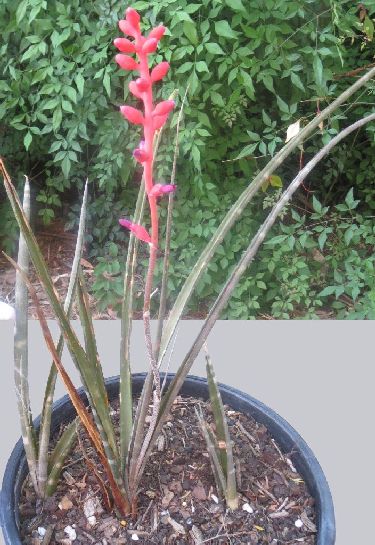
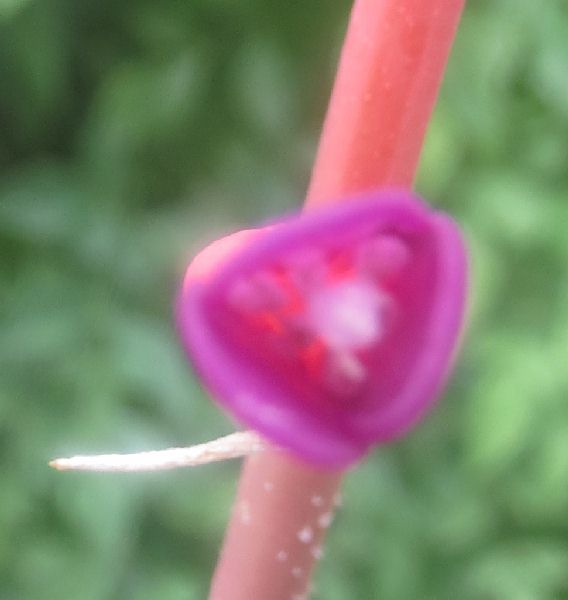
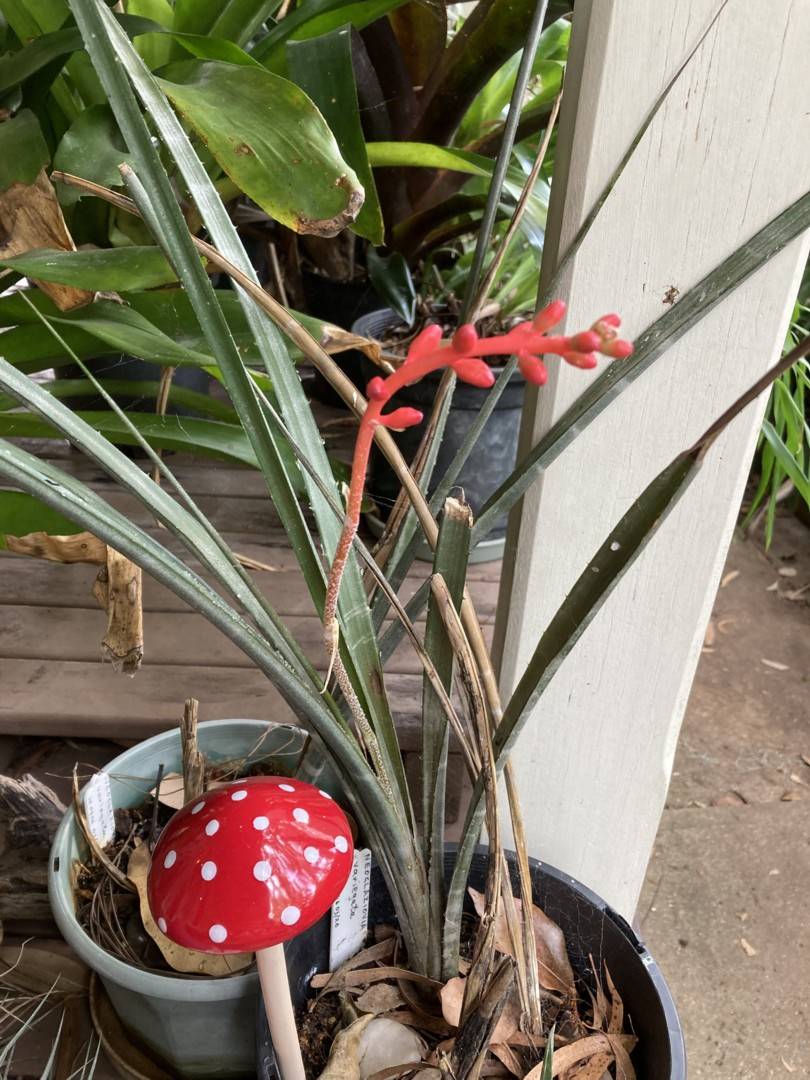
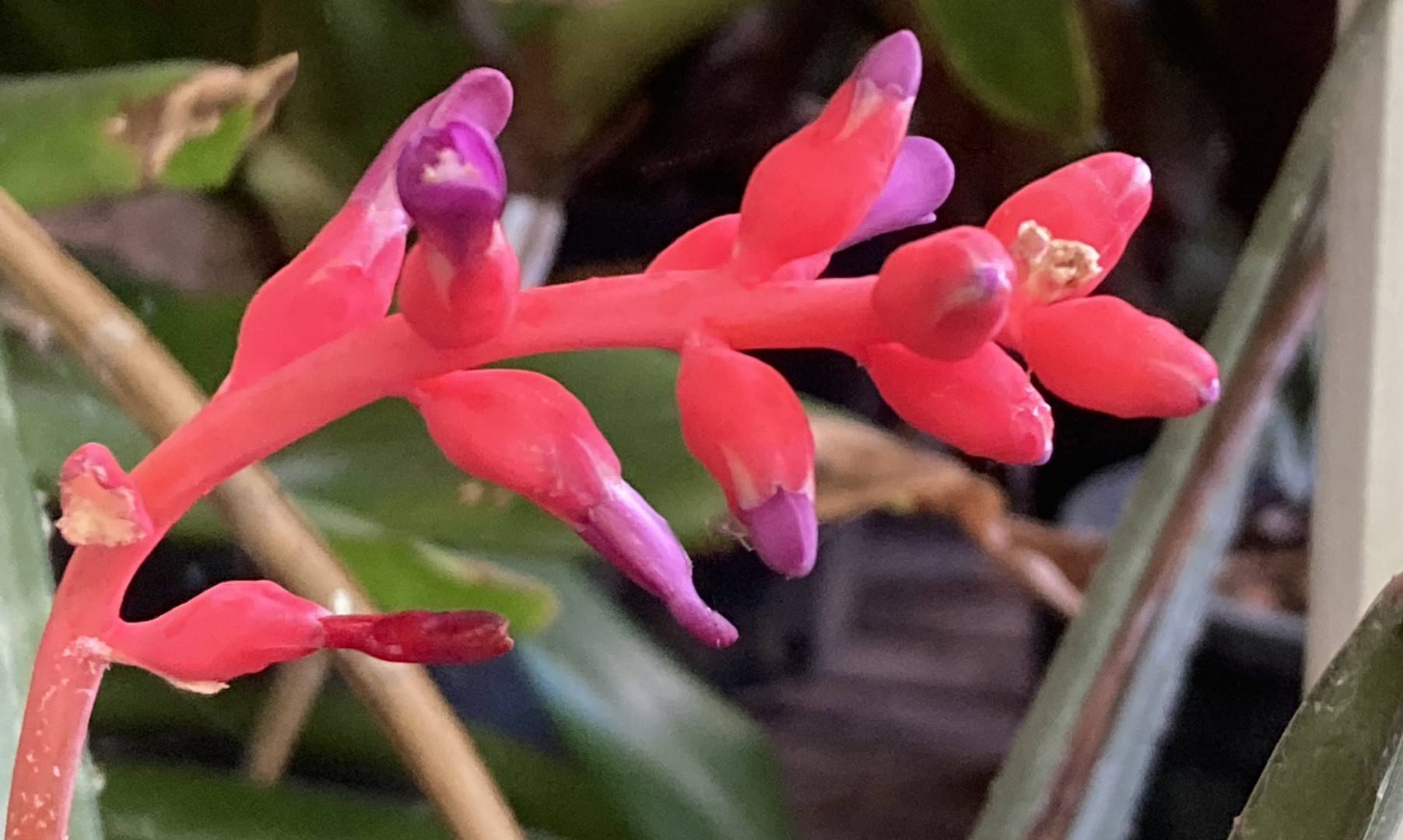
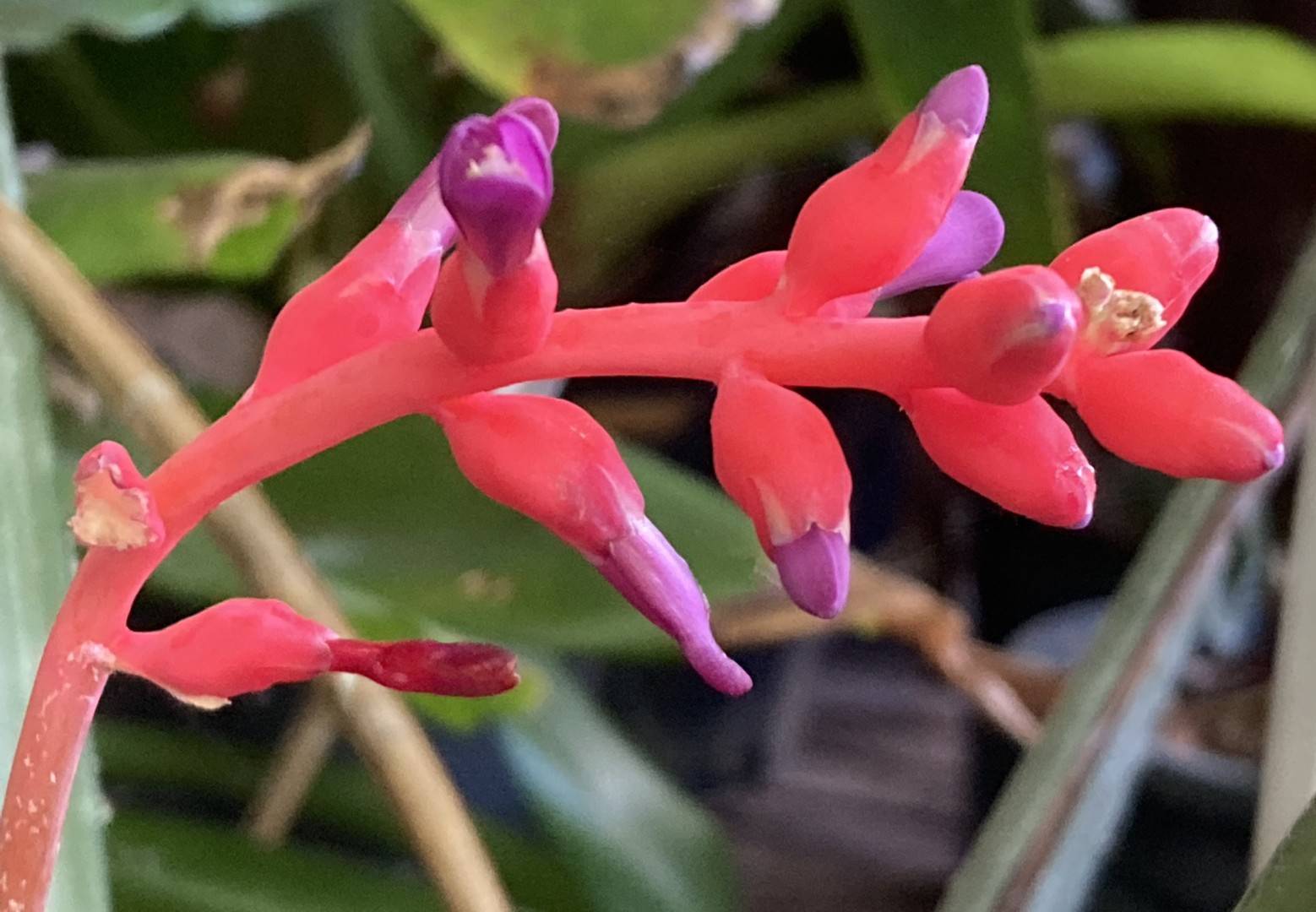
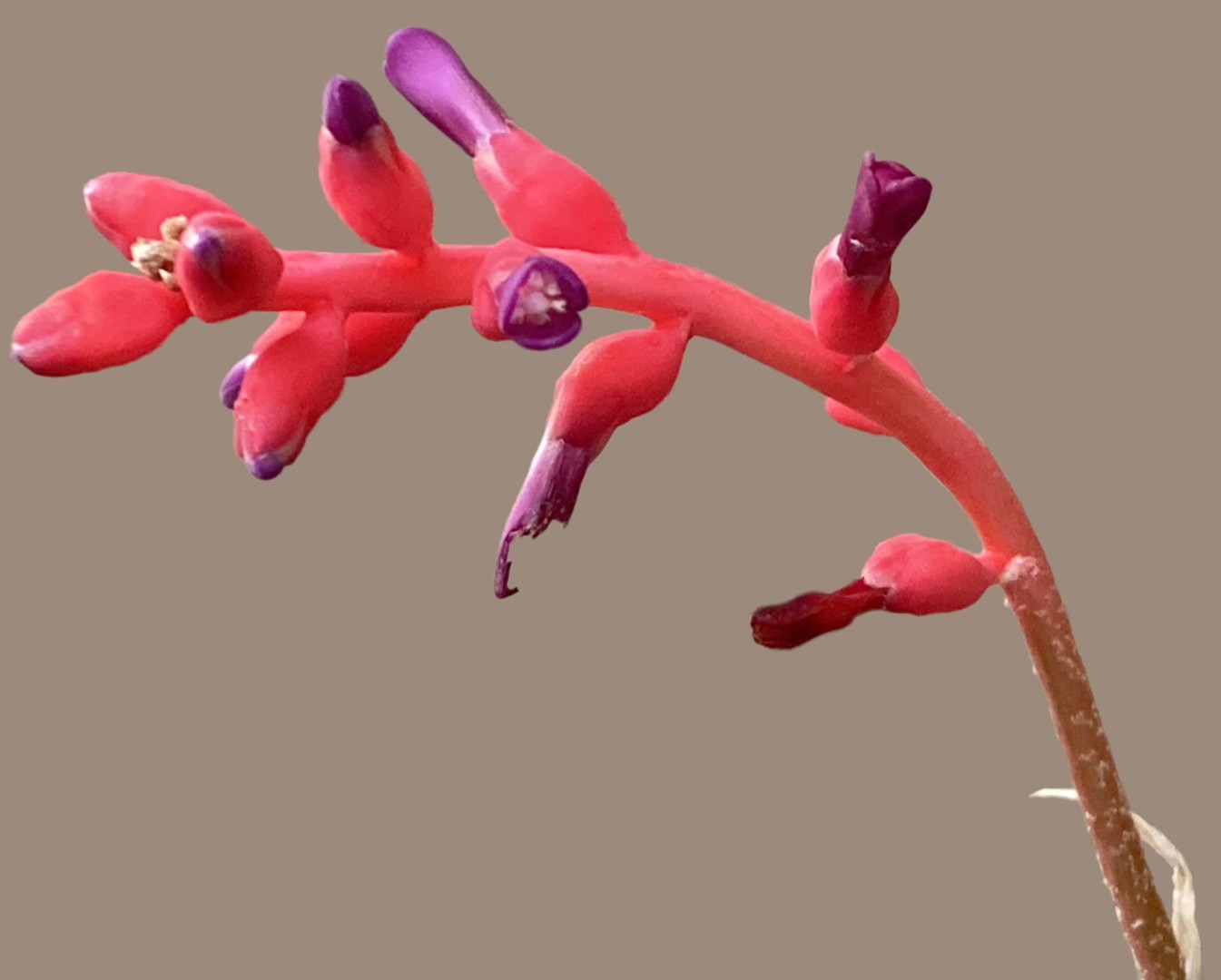
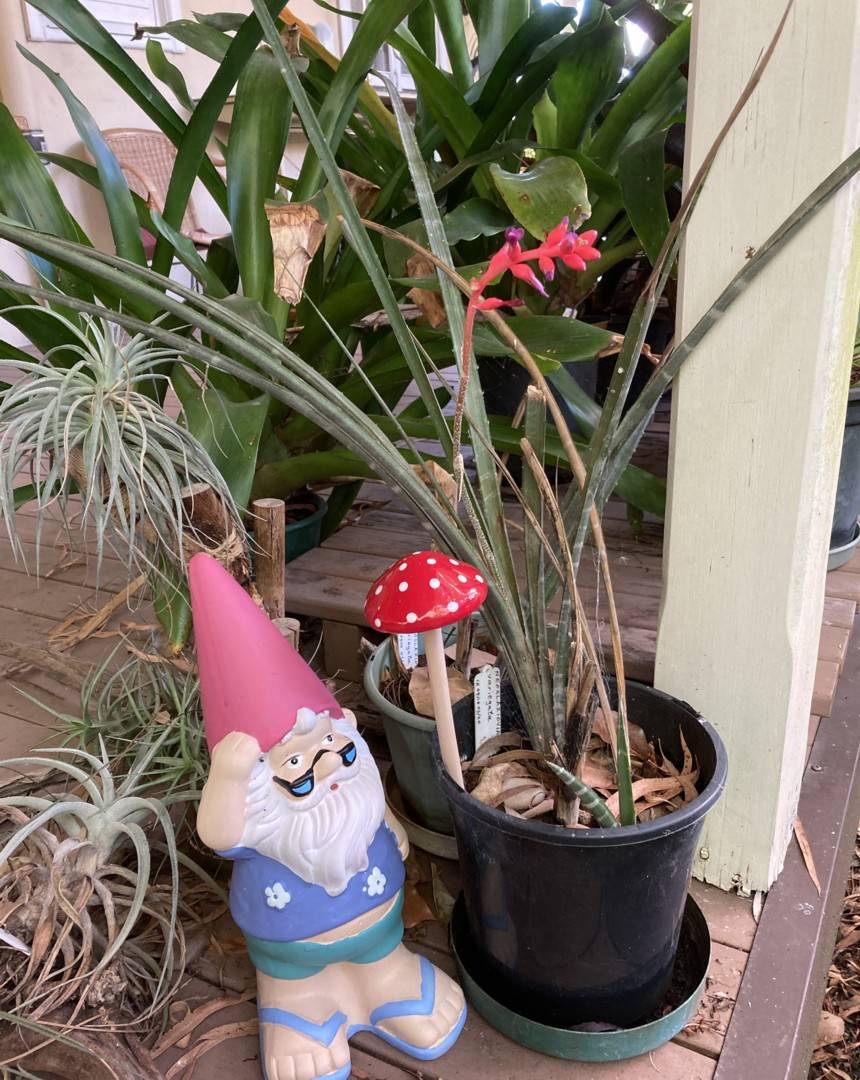
1944
. O (O = The) Caroa. Ministerio da Agricultura, Depto. Nac. da Produqao Vegetal, Divisao de Fomento da Produqao Vegetal, Seccao de Fomento Agricola-Paraiba. 1-270.
Protologue
Dyckia glaziovii Baker, Handb. Bromel. 133. 1889. Type. Caraca, Minas Gerais, Brazil, Glaziou 15671 (K, photo GH; P), Jun 1884.
14. D. GLAZIOVII Baker.
Root-leaves not seen. Peduncle flexuose, 1.5-2 ft. long, its two lower leaves springing from it 6 and 4 in. from the base, linear-complicate, very rigid in texture, tapering to a point, the lowest 3-4 ft. long, armed in the lower part with small hooked brown spines; upper stem-leaves lanceolate, erect, scariose, Inflorescence a dense simple raceme a foot long; pedicels erecto-patent, the lower 1/8 in. long; flower-bracts ovate, 1/3 – 1/4 in. long. Sepals obtuse, 1/3 in. long. Petals shortly protruded.
Hab. Brazil, Glaziou 15671!
Neoglaziovia variegata: a fiber-producing Brazilian Bromeliad by Claudio Coelho de Paula and Elidio Armando Exposto Guarconi in Journ Brom Soc 57(3): 119-120. 2007
The genus Neoglaziovia belongs to the subfamily Bromelioideae. It is characterized as terrestrial or saxicolous, with well-developed rhizomes, slightly succulent, long and canaliculate narrow leaves, inflorescence simple and racemose, sepals and petal free and stamens enclosed. This genus is endemic in Brazil, occurring in the states of Minas Gerais, Bahia, Piaui, Ceara, Rio Grande do Norte, Paraiba, Alagoas, Sergipe and Pernambuco, in the Caatinga biome (Smith and Downs 1979).
According to Smith & Downs (1979) this genus comprised two species, Neoglaziovia variegata and N. concolor, which differ for displaying glabrous leaves with transversal white bands and whitish leaves without bands respectively. Luther (Luther 2002) cites a third species of this genus, Neoglaziovia burle-marxii Leme.
Neoglaziovia variegata (Arruda da Camara) Mez is popularly known as 'caroa', 'craua’ or 'macambira de corda'. It can be easily recognized by its many-spined leaves, thick from the accumulation of water in the leaf tissues, without tank formation, always green among small trees and dry bushes. Inflorescence is red, contrasting with the purple petals. It initiates flowering with the first rains. It grows in non-compact rocky soils, facilitating the development of rhizomes and roots. This species is frequent in the Caatinga, except in its most humid areas.
The 'caroa' fibers were known by the native Indians for their consistency and craft potential. They are of high quality, being three times as strong as jute (Agave sp.). The
Arawete tribe cultivated these bromeliads and used the cordage to make their hunting and defense tool, the bow and arrow Indians of the Kambiwa tribe used the 'caroa' fibers to make sacks, mats, hammocks, brooms, rugs, and baskets and several types of garment. These artifacts were, in general, for everyday use and primarily made by the women. Nowadays, Indian descendants and dwellers in the naturally occurring areas of this species make ropes, baskets, hats, rugs and craftwork. Their fibers have been utilized as raw material in small, exclusively textile industries, called 'caroa mills', in several areas in northeastern Brazil.
In popular medicine, the Neoglaziovia variegata fruit can be used to make tea for cough, bronchitis, the flu and pneumonia. Studies have been currently developed on a possible analgesic activity of this bromeliad.
Research has shown that 'carua' can be cultivated in association with the native vegetation. Thus, it is a plant with great potential for exploration in an agro forest system.
The increasing worldwide search for natural fibers may stimulate its cultivation in naturally occurring regions without destroying the Caatinga, generating income to the population of this semi arid area in Brazil.